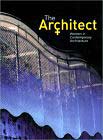
|
|
|
|
 |
|
Home Site Search Contact Us Subscribe
|
|
|
|
BOOKSHELF: Women in Architecture
Books by or about female (and minority) architects and their work are few and far between... by Ellen Louer March 27, 2003 In honor of Women’s History Month, ArchNewsNow is devoting
this edition of Bookshelf to titles relating to women and gender issues in
architecture. Despite recent statistics that show on average 35% of
architecture students are women—only 10% of them go on to become licensed
architects in firms. This under-representation of women in the profession is
also reflected in the literature—books by or about female architects and their
work are few and far between. While it was difficult to find relevant and
recently published titles to include in this column—it wasn’t nearly as
difficult as trying to find new books related to minorities in architecture! We
attempted to devote a column to that last month and could not find enough
titles to do the topic justice. We hope that once the architectural
profession makes a solid commitment to diversify and include more women and
minorities—more books will follow. We’ll keep you posted… Mary Colter’s name might not be well known today, but her buildings certainly are. Each year millions of visitors to the Grand Canyon are impressed with the marvelous work of this architect who is credited with creating the "National Park Service Rustic" style. Shaped by the Arts & Crafts movement, this contemporary of Frank Lloyd Wright greatly contributed to the growth of a distinctly American architectural style devoid of European influences. As an employee of both the Fred Harvey Company and Santa Fe Railway for nearly half a century, Colter (1869-1958) designed many of the most beloved structures at the Grand Canyon, as well as shops, hotels, restaurants, and stations along the rail line. Her hotels include El Navajo (Gallup, NM), La Posada (Winslow, AZ), and Painted Desert Inn (Painted Desert, AZ). For all her projects, Colter methodically researched indigenous art, architecture and building techniques, and always strove to incorporate regional Mexican and Native American motifs into her designs. She did this so effectively that to this day many visitors to Grand Canyon’s Watchtower believe it is a centuries-old Indian ruin. Mary
Colter: Architect of the Southwest is
the first book-length biography and examination of this extraordinary woman’s
career as an architect and interior designer. It is meticulously researched,
beautifully designed, and is a pleasure to read. Author Arnold Berke—clearly
inspired by his subject—does an outstanding job of placing Colter in the proper
social and historical context of her time. This captivating book weaves together
three stories—the remarkable career of a woman in a man's profession during the
late 19th century; the creation of a building and interior style drawn from
regional history and landscape; and the exploitation, largely at the hands of
the railroads, of the American Southwest for leisure travel. A nice feature of
this volume is the final chapter devoted to the current status of buildings she
designed. Hundreds of stunning historic and vivid color photographs complement
the text, which concludes with detailed notes, an index, and an extensive
bibliography.
While Mary Colter’s work went largely unnoticed by the press in her day, the same cannot be said of the architects profiled in our next book, The Architect: Women in Contemporary Architecture. Its original title was changed from The Female Architect in response to the request of the architects to not be judged by their gender, but by their work. The Architect focuses on the careers and designs of 33 distinguished female architects from around the world. Each architect’s profile is condensed to one page and reads like a curriculum vita that includes her Professional History, Selected Awards & Publications, Firm Profile (with a list of select clients), and a “Design Statement” by each architect that discusses—in her own words—her most challenging project or greatest accomplishments. Several pages of photographs, drawings, and plans of impressive projects (including some that are as yet unrealized) follow each profile. The work of Irena Bauman, Lise Anne Couture, Elizabeth Diller, Julie Eizenberg, Karen Fairbanks, Zaha Hadid, Gisue Hariri & Mojgan Hariri, Itsuko Hasegawa, Sulan Kolatan, Victoria Meyers, Regina Pizzinini, Billie Tsien, Sarah Wigglesworth, and many others are showcased in this volume. The Architect is a great introduction to the work of these talented architects, but the book leaves you wanting more. Winston Churchill once said, “We shape our buildings,
and afterwards our buildings shape us.” If so, what does American
architecture—largely created by white males—say about a society that is growing
more diverse each year? Designing for Diversity: Gender, Race, and Ethnicity in the
Architectural Profession reveals a profession
rife with gender and racial discrimination, and examines the aspects of
architectural practice that hinder or support the full participation of women
and minorities. This book chronicles the turmoil and triumph that
underrepresented architects have experienced, and points to the unique
contributions that they have made to the profession. Drawing on interviews and
surveys of hundreds of architects, Kathryn Anthony exposes some of the most
persistent forms of discrimination that occur in architecture, such as being
pigeon-holed into certain job functions, typically interior design for women,
government work for African Americans, and computer-aided design for
Asian-American architects. The glass ceiling, marginalization, isolation,
stereotyping, homophobia, and ageism are also investigated. Anthony effectively
argues that the architectural profession staves off true diversity at its own
peril and suggests several strategies to reform and diversify the profession. The award-winning book Redesigning the American Dream by Delores Hayden has been revised and released in paperback. Originally published in 1984, this groundbreaking examination of suburban space and the “architecture of gender” is essential reading for architects, planners, and public officials. In this new edition, Hayden remains close to her original text (with its outstanding historical research), but has updated it to include current demographic and economic data. In her search for answers to the housing crisis in America, she examines the many societies that have struggled with the architectural and urban consequences of women's paid employment over the years. Hayden traces three models of home in historical perspective—the haven strategy in the United States, the industrial strategy in the former USSR, and the neighborhood strategy in European social democracies—to document alternative ways to reconstruct neighborhoods. It is a thought-provoking book that is just as relevant today as it was when it was published nearly 20 years ago. Delores Hayden is also one
of the contributors to Restoring
Women's History Through Historic Preservation—an edited collection of essays by 20
academic historians, preservationists, and museum professionals from around the
country. Each chapter is a paper originally written for National Women and
Historic Preservation Conferences that began nearly 10 years ago. As such, it
is a scholarly title that would appeal mainly to museum professionals and
readers with a strong interest in women’s history on the public stage. Most of
the articles deal mainly with how best to incorporate women’s history into the
interpretation of historic properties, rather than the nuts and bolts of
historic preservation. The chapters are grouped into five parts: Documenting the History of Women in Preservation;
Revisiting Women's Lives at Historic Houses and Museums; Claiming New Space for
Women in the Built Environment and Cultural Landscape; Exemplary Projects; and Toward and Inclusive Agenda for Preservation Policy and Practice.
Editor’s note: If these are books you’d like to buy, we’d appreciate it if you’d click through the title links (prices listed here do not reflect Amazon discounts). A small portion of your purchase(s) will benefit ArchNewsNow that has been bringing you informative news and views with (so far) no annoying flashing/buzzing/haranguing advertising. Mary
Colter: Architect of the Southwest
By
Arnold Berke, Alexander Vertikoff (Photographer) Princeton
Architectural Press Paperback (also available in hardcover) 320
pages, 120 color and 150 black and white photographs Copyright:
2002 $24.95
US The
Architect: Women in Contemporary Architecture Edited
by Maggie Toy; Preface by Peter Pran Watson-Guptill
Paperback 184
pages, 35 black and white illustrations, 200 color illustrations Copyright:
2001 $29.95
US Designing
for Diversity: Gender, Race, and Ethnicity in the Architectural Profession By Kathryn
H. Anthony University
of Illinois Press Hardcover 272
pages, 14 photographs Copyright:
2001 Redesigning
the American Dream: Gender, Housing, and Family Life
Revised Edition
By Dolores Hayden
Norton
Paperback 288
pages with illustrations Copyright:
2002 $15.95
US Restoring
Women's History Through Historic Preservation
Edited
by Gail Lee Dubrow and Jennifer B. Goodman Johns
Hopkins University Press Hardcover 464
pages, 107 halftones, 10 line drawings Copyright:
2003 $49.95 US |
(click on pictures to enlarge)  Mary Colter: Architect of the Southwest Mary Colter: Architect of the Southwest The Architect: Women in Contemporary Architecture The Architect: Women in Contemporary Architecture Designing for Diversity: Gender, Race, and Ethnicity in the Architectural Profession Designing for Diversity: Gender, Race, and Ethnicity in the Architectural Profession Redesigning the American Dream: Gender, Housing, and Family Life Redesigning the American Dream: Gender, Housing, and Family Life |
© 2003 ArchNewsNow.com